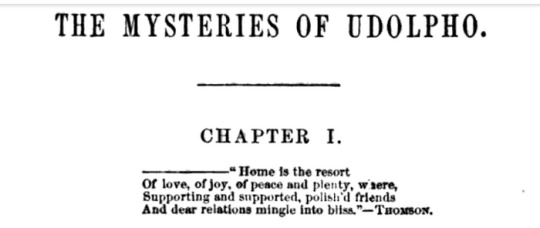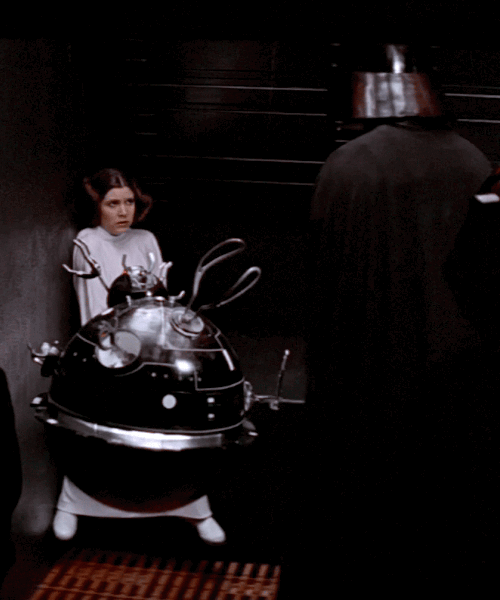#emily st aubert
Explore tagged Tumblr posts
Text
Reading about Ann Radcliffe's The Mysteries of Udolpho
An innocent, and virtuous young woman, the orphaned Emily falls in the hands of a heartless villain named Montoni. He confines her in a grim and isolated castle full of mystery and terror. There she must cope with an unwanted suitor, Montoni’s threats, and the terrors and wild imaginings that threaten to overwhelm her.
Jonathan Harker: she's just like me fr
#I need to read it because it's genre defining#the mysteries of udolpho#emily st aubert#jonathan harker#dracula#dracula daily
45 notes
·
View notes
Text
Emily is also from the Gascogne?!
Lmao, I will never be free from characters from the Gascogne
#Emily st aubert#D’Artagnan#the mysteries of udolpho#the three musketeers#holla kaja is live blogging books again
0 notes
Text

here we are again, my old friend. Time for a re-read. In case you were curious, this is The Mysteries of Udolpho, by Ann Radcliffe. The heroine, Emily St. Aubert (the name! the naaaame!) is the most incredible Mary Sue to ever Mary Sue and I love her for it. She is beautiful, gentle, good at everything, but most importantly the most Pure and Good Girl Ever. Descriptions go on and on for pages. In fact, everything is described to DEATH in lush and exhausting detail. But! You get to read things like this-
"The deepest shade of twilight did not send him from his favourite plane-tree. He loved the soothing hour, when the last tints of light die away; when the stars, one by one, tremble through æther, and are reflected on the dark mirror of the waters; that hour, which, of all others, inspires the mind with pensive tenderness, and often elevates it to sublime contemplation. When the moon shed her soft rays among the foliage, he still lingered, and his pastoral supper of cream and fruits was often spread beneath it. Then, on the stillness of night, came the song of the nightingale, breathing sweetness, and awakening melancholy."
purple prose and mary sues are an important part of the literary ecosystem and should be treasured.
#do I recommend it?#wholeheartedly#IF you've got the spoons to dig your way through this one hoo boy#sadly no incest unless it was a side character I've forgotten about#a LOT happens in this book#the plot's very intricate and interesting#but there's a lot of characters to remember#The Mysteries of Udolpho#Ann Radcliffe#gothic literature
13 notes
·
View notes
Text
Leia Organa as the Gothic Heroine
“Through a dream landscape, . . . a girl flees in terror and alone amid crumbling castles, antique dungeons, and ghosts who are never really ghosts.
She nearly escapes her terrible persecutors, who seek her out of lust and greed, but is caught; escapes again and is caught; escapes once more and is caught . . . [and] finally breaks free altogether, and is married to the virtuous lover who has all along worked (and suffered equally with her) to save her."
-Leslie A. Fledler, Love and Death in the American Novel

The gothic novel is a genre of literature that has grown increasingly compelling to me. Defined by its mixture of romanticism and horror— or “wonder and terror”, with a “loose literary aesthetic of fear and haunting”— these stories are known for their forbidden castles, ghostly mysteries, and, most centrally, their heroines, fleeing terrified into the night in a flowing white gown…
Over the years the gothic has become a genre dominated by the feminine and by women writers. And even though the first example of gothic literature, Horace Walpole’s The Castle of Otranto, was written by a man, the story is largely focused on its heroines. The central plot thread sees a corrupt tyrant prince pursuing a much younger princess for the sake of marriage and her desperate attempts to escape him, as she flees through his castle, through twisted corridors, trap doors, and all manner of danger.
I began to think of the relation between the archetype of gothic heroine and Star Wars’s female lead, Princess Leia Organa. After all, she is typically clad all in white and on the run from a dastardly Imperial villain of some sort. And it would not be so difficult for the Death Star to serve as an old manor, filled with secrets and danger… trap doors (garbage chutes), gaping chasms, masked phantoms (Sith Lords) and terrible, power-hungry old men.

The gothic heroine is a young woman often characterized by her virtue, innocence and beauty. She may be born into a position of high social status, with a wealthy or aristocratic family, or even be full-fledged royalty. Some time early in the story, however, she loses her privilege and power… orphaned, imprisoned, or otherwise inconvenienced. In Ann Radcliffe’s The Mysteries of Udolpho, for instance, our protagonist Emily St. Aubert lives an idyllic life with her well-to-do parents, only for both to die and her fortune to be lost in the first act, where she is then given into the power of her aunt and eventually her villainous uncle-by-marriage, Montoni. Leia, too, was a happy and beloved child as the Crown Princess of Alderaan, even with the shadow of the Empire looming overhead… but is captured on a fateful mission for the Rebellion and sees her planet destroyed for her troubles.
And while a gothic heroine may be physically frail she has the mental fortitude and agency to be the one who drives the plot forward. Leia, too, subverts being placed the box of “damsel in distress” with her strong will and her active fierce participation in the rebel cause.
The consistent pattern of “escaping and being caught” is another that Leia follows quite clearly throughout the original trilogy… when we first meet her, she is fleeing from her Imperial pursuers, only to be overpowered and captured. She’s taken aboard the Death Star, endures torture, and gets rescued… only for the next movie to involve yet another game of pursuit between her and Vader where she’s eventually caught yet again at Bespin. After another escape, she opens the subsequent film with an attempt to rescue her (not-so) “virtuous lover” from his prison… and she is made a slave. She escapes with her own ingenuity to rejoin the Rebellion, is nearly defeated in the perilous final battle at Endor, but with the help of her allies, wins the day and all is made right. A typical fairy tale ending.
And then there are her villainous persecutors, of which there are primarily three— Vader, Tarkin, and Jabba.
The gothic heroine is often menaced by a powerful man,?usually bearing misogynistic or patronizing sentiments. He is dark and threatening, yet can also be alluring… and the heroine strives to escape his oppressive power. So too with Leia, as representative of the Rebellion, seeking to destroy the oppression of the Empire.
In short, Star Wars is a very melodramatic, archetypal tale, and Leia’s journey both illuminates and subverts that.
#star wars#leia organa#wilhuff tarkin#darth vader#gothic heroines#villain x heroine#tarkin x leia#willeia#leia and vader#star wars a new hope#terrible analysis by tantive
59 notes
·
View notes
Text
@treeaspen writes:
#girls give him a bachelor party
@c-schroed writes:
#a GHSG party sounds nice indeed
@per4mancecheck writes:
#bach party #yes brides to be have been abbreviating it such
HMMMMMMM
Jonathan Harker: w-what's all this???
Catherine Moreland: we've decided to throw you a bach party
Pamela Andrews: we're all just so happy to see your virtue at last rewarded
Jonathan Harker: uh... what? Oh you mean a bachelor's party?? I'm not sure Sister Aga-
Emily St. Aubert: we do not
Christine Daée:
Jauchtet Gott in allen Landen!
Was der Himmel und die Welt -
#gothic heroine support group#Jonno's stag#there's a lot of things that go on at a bachelor's party that are not particularly convent appropriate#but Jonno can have a little lutheranism. as a treat#the joke hear is Johann Sebastian Bach#both joke and playlist courtesy of per4mancecheck
44 notes
·
View notes
Text
Have you read...

With The Mysteries of Udolpho, Ann Radcliffe raised the Gothic romance to a new level and inspired a long line of imitators. Portraying her heroine's inner life, creating a thick atmosphere of fear, and providing a gripping plot that continues to thrill readers today, The Mysteries of Udolpho is the story of orphan Emily St. Aubert, who finds herself separated from the man she loves and confined within the medieval castle of her aunt's new husband, Montoni. Inside the castle, she must cope with an unwanted suitor, Montoni's threats, and the wild imaginings and terrors that threaten to overwhelm her.
submit a horror book!
#The Mysteries of Udolpho#Ann Radcliffe#horror books#horror#bookblr#books#horrorbookpoll#horror classics#gothic horror#gothic#18th century
8 notes
·
View notes
Text
Support Group for Victorians Stuck in Fancy Old Buildings with Creepy Aristocrats
Current Members:
Jonathan Harker
Edith Cushing
Daniel of Mayfair
Emily St. Aubert
4 notes
·
View notes
Text
I refuse to make fun of Emily St. Aubert for constantly fainting even though it does get concerning at times. Oh, she faints every chapter? Good for her. More representation for the iron-deficient folks out there. Ann Radcliffe is doing it for the fans.
32 notes
·
View notes
Note
Is Jonathan the only case of being engaged to someone (who isn't her captor) from the start?
As far as I know, he is! I, to my shame, haven't read The Mysteries of Udolpho yet, but I checked and Emily St. Aubert's engagement begins before she meets her captor, but she isn't engaged at the start of the book. She meets her fiancé at the beginning of the story, and I think she's the only other case where the Heroine is engaged when she meets the captor. Everyone else either marries the captor, ends the book single, of gets engaged after The Horrors have already begun.
7 notes
·
View notes
Text
DNI if you are Palladianist, pro-Renaissance, Goth Critical, Classicism Apologist, support the recruitment tactics of Les Amis de l'Abaissés, or if you ship Emily St. Aubert / Valancourt
Guy who has a DNI but it's just full of antiquated terms and references to factions that haven't existed for 200+ years so it makes no sense to anybody
18K notes
·
View notes
Text
Emily fighting back is what I wanted the whole time from this book! 🙌
No more peace, harmony, and friendliness, now it finally gets ugly
2 notes
·
View notes
Text
10 characters, 10 fandoms
Ooo thanks so much for the tag, @moff-times! This should be fun!
1. Leia Organa / Star Wars
2. Yona / Yona of the Dawn
3. Anya Forger / SPY x FAMILY
4. Riliane Lucifen d’Autriche / Evillious Chronicles
5. Maya Fey / Ace Attorney
6. Mina Murray Harker / Dracula
7. Christine Daae / The Phantom of the Opera
8. Sariphi / Sacrificial Princess and the King of Beasts
9. Kikyo / Inuyasha
10. Emily St. Aubert / The Mysteries of Udolpho
Tagging: @goosemoosse @spittingspite @lesbworth @gooseyhouse @c0ldbrains
2 notes
·
View notes
Note
Cha cha cha by ending up accidentally anywhere in Poland he ends up in the vicinity of approximately 3 churches and crosses permanently, every 5 meters he walks he receiving +100 Holy Damage. It is like being bound in a Catholic hospital. The vampirism cannot escape. The garlic in krakowska may burn him but we know how he is he'll just order seconds. I hop he likes butter and cream in his food.
Tomorrow at the Support Group meeting:
Christine Daée: so the Horrors gave you Brain Fever?
Jonathan Harker: no it was all the garlic in Krakow
Emily St. Aubert: that's rough buddy
Jonathan Harker: AND I brought enough to share!
Pamela: *faints*
#dracula daily#jonathan saved from vampirism via forced detox#gothic heroine support group#I have read none of these books help
48 notes
·
View notes
Text
After the slighty yet impossible possibility of the gang being part of the background while the plot of the Murder on the Orient Express plays in their train. I am just obsessed with the idea of all gothic novels crossover, it doesn't matter if the novels happen in different years, or eras. All of them are neighbors, or friends, or they just meet eachother in the weirdest situation possible.
Van Helsing stops before he goes to Jack's asylum to visit his dear old friend Henry Jekyll, they haven't talked in ages. Jack and Victor Frankenstein were classmates in the same university, they made eachother slighty worse. Lucy and Mina and Emily St. Aubert were good friends in school before Emily had to go because her family couldn't afford it anymore.
We know that Clarimonde is just taking her yearly vacations in London, yet her day is ruined when she meets that jackass of Dracula who apparently can't behave normally. Dorian Gray? You mean Jonathan's annoying neighbor who always tried to make Mina angry because he is a little shithead? Carmilla was an acquaintance of Arthur's who he met in a ball once. She misteriously appears again to give him condolences for the death of his beloved Lucy :)
#I just need all of these characters meeting in plot possible shenanigangs#Dracula and Carmilla hate eachother#Lucy and Emily were really good friends I can feel it#dracula daily#dracula#carmilla#the strange case of dr jekyll and mr hyde#the picture of dorian gray#murder on the orient express#frankenstein#la morte amoreuse#the mysteries of udolpho
211 notes
·
View notes
Note
I would love to hear you talk more about Gothic/Romantic tropes in asoiaf!
"...The Gothic world is fascinated by violent differences in power, and its stories are full of constraint, entrapment and forced actions. Scenes of extreme threat and isolation – either physical or psychological – are always happening or about to happen. A young woman in danger, such as the orphan Emily St Aubert in Ann Radcliffe’s The Mysteries of Udolpho (1794) or Lucy Westenra in Dracula, is often at the centre of Gothic fiction.
Against such vulnerable women are set the great criminals or transgressors, such as the villainous Montoni in The Mysteries of Udolpho or Count Dracula. Cursed, obscene or satanic, they seem able to break norms, laws and taboos at will. Sexual difference is thus at the heart of the Gothic, and its plots are often driven by the exploration of questions of sexual desire, pleasure, power and pain..."
"...Gothic is thus a world of doubt, particularly doubt about the supernatural and the spiritual. It seeks to create in our minds the possibility that there may be things beyond human power, reason and knowledge. But that possibility is constantly accompanied by uncertainty.
In Radcliffe’s work, even the most terrifying things turn out to have rational, non-supernatural explanations; by contrast, in Lewis’s The Monk, Satan himself appears. The uncertainty that goes with Gothic is very characteristic of a world in which orthodox religious belief is waning; there is both an exaggerated interest in the supernatural and the constant possibility that even very astonishing things will turn out to be explicable..."
John Bowen, Professor of 19th century literature at the University of York
From Medium's Gothic tropes list: "Crows or ravens, bats, howling wolves, often portents... Endangered child to protect, orphans... Sick and twisted relative, mad, deformed, hidden away, idiotic, or controlling... Hidden love-child... Passionate attraction to a dangerous man... Paranormal figures, hauntings and powers, though they may end up being illusory...
Woman struggling against accepting stereotypical gender roles... Restrictive religious requirements causing twisted psyches.... Mysterious servants working with masters or helping the good ones... Men with secrets scheming against virginal woman.... Visions, dreams, and scrying...
Incest, sexual perversions, incest, BDSM, unholy couplings, paranormal seduction... Women newly married to men with secrets... Fortunes gained, threatened, lost, recovered.... Androgynes... Women at the mercy of men going insane and becoming cruel..."
12 notes
·
View notes
Text
me 🤝 catherine morland 🤝 emily st. aubert
ahh! maybe its a ghost! maybe some dark, secret villainous deeds are being concealed! O! the horror of it all!
4 notes
·
View notes